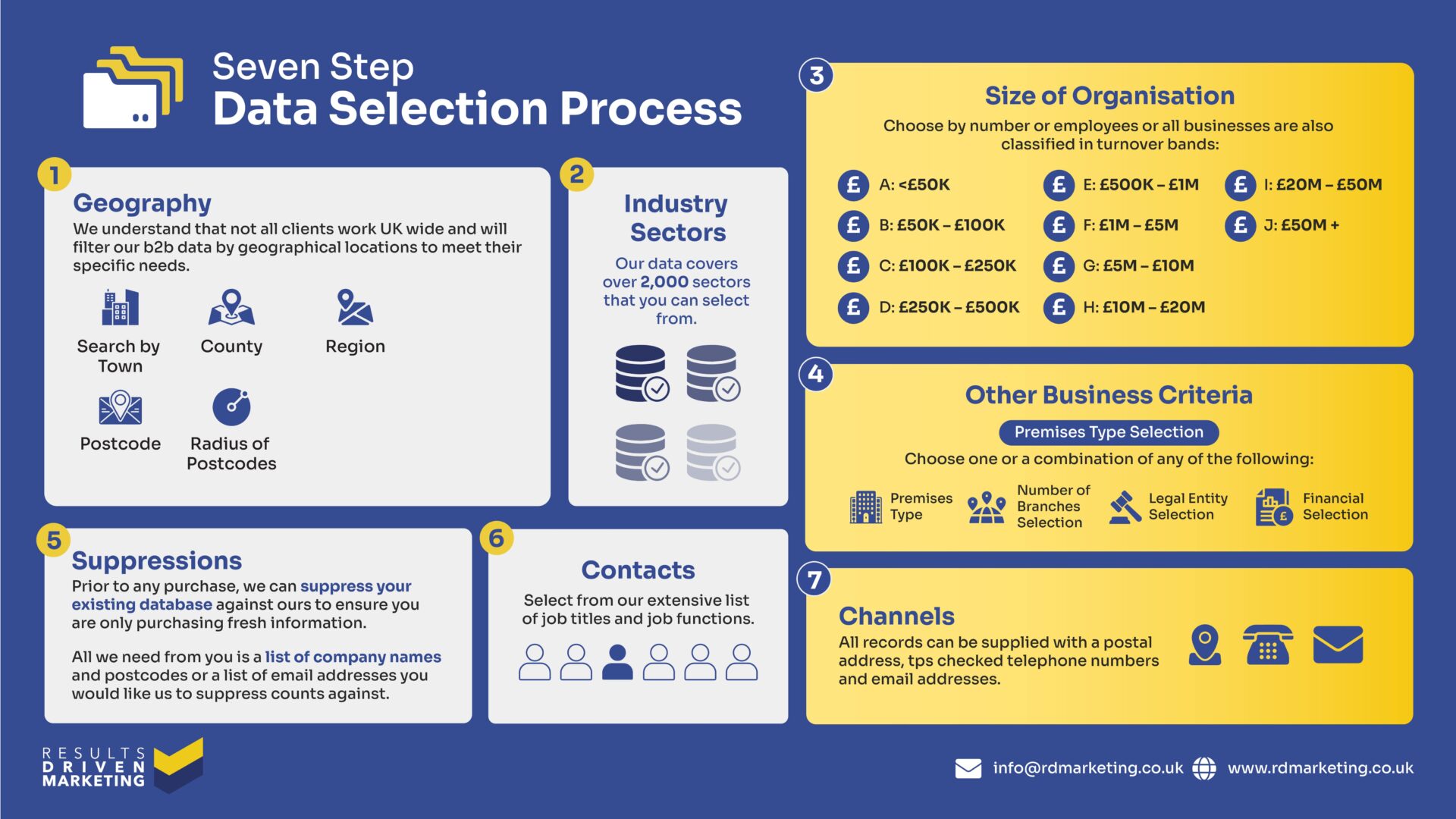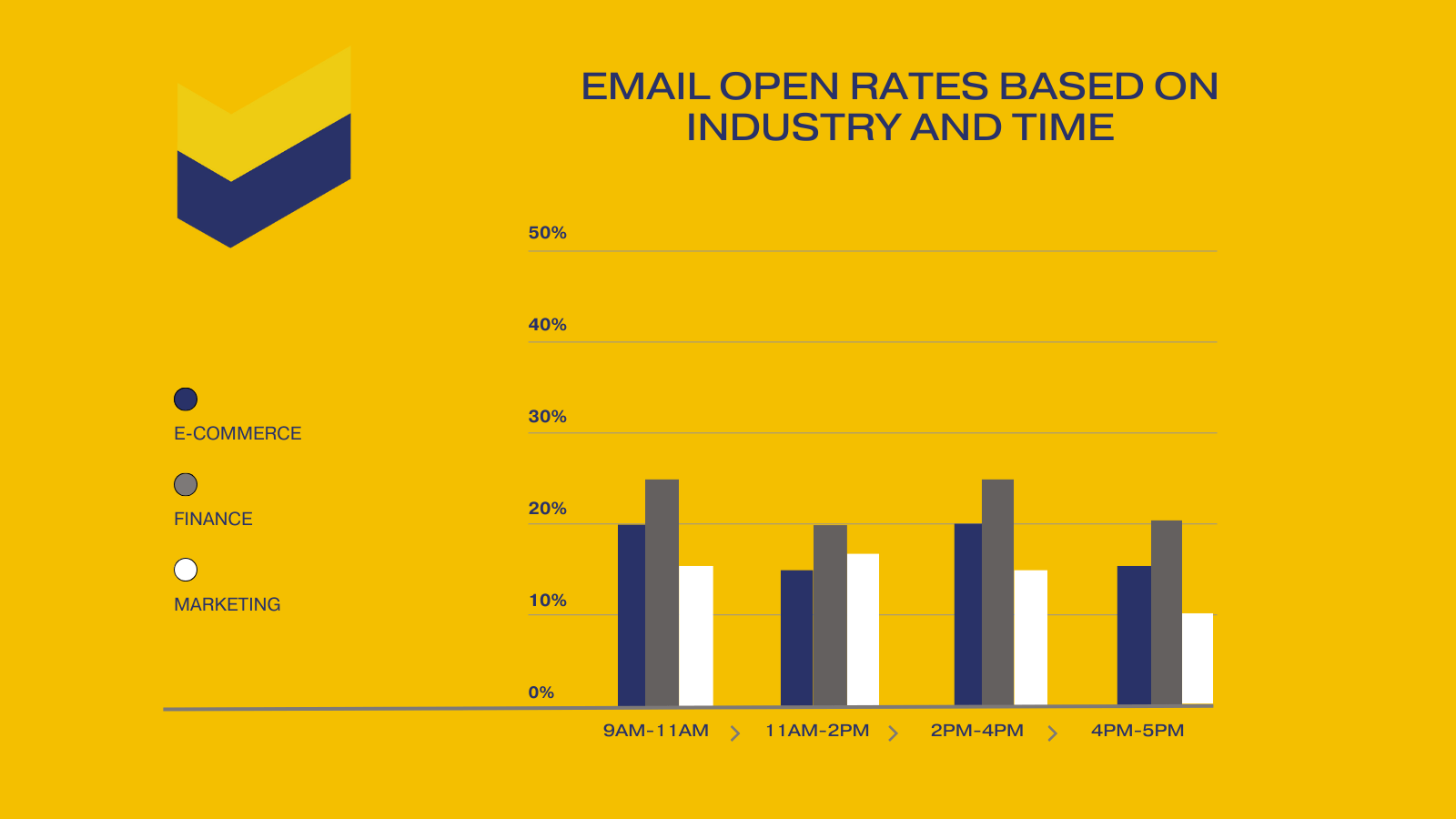
Email Marketing Benchmarks
Email marketing benchmarks are the key to understanding how your campaigns stack up, making email marketing an essential tool for businesses looking to connect with their audience in a personal, direct way.
It’s a channel that consistently delivers results—whether you’re nurturing leads, keeping existing customers engaged, or driving conversions. But here’s the thing: sending out emails isn’t enough. To really succeed, you need to track your performance, and that’s where these benchmarks come in to guide you.
These benchmarks act like a compass, guiding your strategy by helping you understand how your campaigns stack up against industry standards.
They reveal averages for key metrics like open rates, click-through rates, and conversions, giving you insights into what’s working and where you can improve. For instance, are your emails engaging enough to beat the average open rate? Or is your click-through rate lagging behind your competitors? These are the questions benchmarks help you answer.
Tracking and comparing your metrics against email marketing benchmarks is essential for identifying gaps in performance. Without them, you’re operating in the dark, unsure whether your campaigns are truly resonating with your audience or falling flat.
At RD Marketing, we understand the importance of data-driven email campaigns. That’s why we provide solutions to help businesses refine their email strategies and meet, or even exceed, industry benchmarks. Whether you need a B2B Email List to target decision-makers, or assistance with Email Marketing Management Services to automate and optimise your campaigns, we’ve got you covered.
Benchmarks don’t just tell you where you stand; they highlight what’s possible. And with access to high-quality Direct Mail Data and Telemarketing Data, you can ensure that your campaigns are backed by actionable insights, enabling you to achieve better results across all marketing channels.
By understanding and leveraging email marketing benchmarks, you’re not just measuring performance—you’re setting your business up for success. This article will dive deeper into what these benchmarks are, why they matter, and how you can use them to elevate your email marketing efforts.
Table of contents:
What Are Email Marketing Benchmarks?
At its core, email marketing benchmarks are the yardsticks that help you measure the success of your campaigns. They represent industry averages and standards for key performance metrics, allowing you to compare your email marketing results against what others in your sector are achieving.
This comparison helps you identify areas where your campaigns are excelling and where there’s room for improvement.
So, what exactly do email marketing benchmarks measure? Let’s break down the essential metrics:
Open Rates
Open rates indicate the percentage of recipients who opened your email. It’s often the first sign of whether your subject lines and sender name are compelling enough to grab attention. A strong open rate signals that your email stood out in a crowded inbox.
- Typical benchmarks for open rates vary by industry, but most fall between 15% and 25%.
- Personalised subject lines and segmented lists can significantly improve your open rates.
Need help with segmentation? Explore our Email Address List Data to create targeted campaigns that resonate with your audience.
Click-Through Rates (CTR)
CTR measures how many recipients clicked on a link within your email. It reflects how engaging and relevant your content is to your audience.
- Average CTRs typically range from 2% to 5%.
- To boost CTR, use clear calls-to-action (CTAs) and ensure your email design is mobile-friendly.
For businesses looking to refine their email content, our Data Enrichment Services can provide valuable insights to create more impactful messages.
Conversion Rates
This metric tracks the percentage of recipients who completed a desired action, such as making a purchase or signing up for an event. Conversion rates are often the ultimate indicator of an email campaign’s effectiveness.
- Conversion rate benchmarks vary greatly depending on the industry and campaign goal but usually fall between 1% and 3%.
- Testing different CTAs, optimising landing pages, and offering personalised incentives can improve conversions.
Looking for a tailored approach? Our Telemarketing Data can help drive follow-ups to boost conversions even further.
Bounce Rates
Bounce rates measure the percentage of emails that couldn’t be delivered to recipients. A high bounce rate can harm your sender reputation, making it critical to keep this number as low as possible.
- Benchmarks for bounce rates typically range from 0.5% to 2%.
- Regular list cleaning and validation can keep your bounce rates in check.
Use our Data Cleansing Services to ensure your email lists are always up-to-date and accurate.
Unsubscribe Rates
Unsubscribe rates show the percentage of recipients who opted out of receiving future emails. While some level of unsubscribes is normal, a high rate may indicate that your content isn’t meeting audience expectations.
- Benchmark unsubscribe rates hover around 0.2% to 0.5%.
- Delivering relevant, valuable content and avoiding excessive email frequency can minimise unsubscribes.
To create campaigns that truly resonate, consider leveraging our B2B Data for audience insights and segmentation.
Industry-Wise Email Marketing Benchmarks
When it comes to email marketing, one size doesn’t fit all. Every industry has unique audiences, goals, and strategies, which means that email marketing benchmarks can vary significantly depending on the sector. By understanding these industry-specific benchmarks, businesses can set realistic expectations and fine-tune their campaigns for maximum impact.
Let’s dive into the key industries and their email marketing benchmark metrics, including open rates, click-through rates (CTR), and conversion rates, to give you a clear picture of what to aim for.
Retail Industry
The retail sector thrives on engaging emails that drive customers to purchase. From promoting flash sales to launching new product collections, retail campaigns often focus on urgency and visual appeal.
- Open Rate: 18–25%
- Click-Through Rate (CTR): 2.5–3.5%
- Conversion Rate: 2–4%
To achieve and exceed these benchmarks, retailers need accurate targeting. Our Consumer Data ensures you reach the right audience with tailored messaging that resonates.
Technology Sector
The technology industry typically sends educational emails, product updates, and whitepapers to keep audiences informed. These campaigns often rely on a B2B approach with highly segmented audiences.
- Open Rate: 20–28%
- CTR: 2–5%
- Conversion Rate: 1.5–3%
Tech businesses can benefit from B2B Data to connect with decision-makers and influencers in their niche, ensuring their content reaches the right inboxes.
Healthcare Industry
In healthcare, email marketing is all about building trust and providing value. Whether it’s appointment reminders or health tips, messages need to be clear, compliant, and engaging.
- Open Rate: 22–30%
- CTR: 3–4%
- Conversion Rate: 2–3%
Maintaining compliance and list accuracy is crucial in this industry. With our CTPS Checker and Data Cleansing Services, healthcare organisations can avoid deliverability issues and stay GDPR-compliant.
Financial Services
Financial emails are often highly personalised, offering investment opportunities, policy updates, or account-related notifications. Precision is key in this industry.
- Open Rate: 19–24%
- CTR: 2–3.5%
- Conversion Rate: 1–2.5%
For financial institutions targeting specific demographics or regions, our Direct Mail Data and International Email Lists provide the precision and scope needed for success.
B2B and SaaS
The B2B and SaaS industries rely heavily on nurturing campaigns to educate prospects and encourage trial sign-ups or consultations. Consistent value-driven communication is key.
- Open Rate: 20–30%
- CTR: 2–6%
- Conversion Rate: 1.5–3.5%
B2B marketers can see higher engagement rates by combining Telemarketing Data with their email strategies for follow-up calls that solidify relationships and drive conversions.
Using Industry Benchmarks to Drive Success
Comparing your performance to industry email marketing benchmarks isn’t just helpful—it’s essential. By identifying where your campaigns align or fall short, you can take actionable steps to optimise and grow.
Whether you’re looking to improve open rates, enhance CTRs, or boost conversions, Email Marketing Management Services from RD Marketing can help you implement data-driven strategies that yield better results.
Every industry has unique benchmarks, but the key to success lies in leveraging the right tools and insights to exceed those averages. With services like Data Enrichment and high-quality email lists, we’ll help you stay ahead of the competition and make every email count.
What are the key considerations when using email marketing benchmarks?
When diving into the world of email marketing benchmarks, it’s not just about the numbers. Here are some pivotal considerations to keep in mind:
- Industry Relevance: Ensure the benchmarks you’re comparing against are relevant to your specific industry. Comparing apples to oranges won’t yield meaningful insights.
- Audience Specificity: Your audience’s unique characteristics and preferences can significantly influence email marketing metrics. Always factor in these nuances.
- Changing Trends: The digital landscape is ever-evolving. What was a benchmark last year might not hold true today. Stay updated.
- Holistic Approach: Don’t just focus on one metric. Consider the bigger picture and how various metrics interplay to give a comprehensive view of your campaign’s health.
What are the alternatives to using email marketing benchmarks?
While email marketing benchmarks are undeniably valuable, they aren’t the only game in town. Here are some alternatives:
- Internal Historical Data: Instead of looking outward, delve into your past campaigns. Analyse their performance to set internal benchmarks.
- Competitor Analysis: Keep an eye on what your competitors are doing. Their successes and failures can offer invaluable insights.
- Audience Feedback: Sometimes, the best insights come directly from the horse’s mouth. Regularly solicit feedback from your audience to gauge campaign effectiveness.
- A/B Testing: Continuously test different email elements to see what resonates best with your audience. Over time, this can help you establish your benchmarks.
Email Marketing Benchmarks by Industry
The beauty of email marketing benchmarks is that they aren’t monolithic. They vary across industries, offering tailored insights. For instance:
- E-commerce: With a plethora of promotional emails and newsletters, open rates and click-through rates are pivotal metrics to monitor.
- B2B: Given the longer sales cycles, metrics like lead nurturing effectiveness and conversion rates take centre stage.
- Healthcare: Patient engagement and appointment reminders might be more relevant metrics in this domain.
- Education: For educational institutions, metrics around course sign-ups, webinar attendance, and resource downloads might be more pertinent.
In essence, while the overarching concept of email marketing benchmarks remains consistent, the specifics can vary widely based on the industry in question. It’s all about finding what’s most relevant to you and your audience.
Email Marketing Benchmarks by Day
Ah, the age-old question: when is the best day to send out those meticulously crafted emails? Well, email marketing benchmarks come to the rescue yet again, shedding light on this very conundrum.
- Weekdays vs. Weekends: Conventional wisdom might suggest that weekdays, when people are more glued to their screens, might be the best. However, some industries see a spike in engagement over the weekend. It’s all about knowing your audience.
- Midweek Magic: Many studies have pointed to Tuesday and Wednesday as the golden days for email engagement. But again, this isn’t a one-size-fits-all scenario.
- Avoiding the Monday Blues: Mondays can be a bit hectic, with inboxes flooded over the weekend. So, it might be wise to give Monday a miss.
Remember, while these benchmarks offer a general guideline, it’s always a good idea to test and see what works best for your specific audience.
Email Marketing Benchmarks by Region
The beauty of email marketing is its global reach. But with this comes the challenge of catering to diverse audiences across different regions. Email marketing benchmarks can offer insights here:
- North America: Known for its tech-savvy populace, open rates and CTRs tend to be higher. However, it’s also a highly competitive market.
- Europe: With GDPR in play, email marketing in Europe requires a more nuanced approach. But adherence to regulations can lead to a more engaged audience.
- Asia-Pacific: A rapidly growing market with its unique set of challenges and opportunities. Cultural nuances play a significant role here.
- Latin America: An emerging market with a lot of potentials. However, it’s essential to be mindful of the diverse languages and cultures.
How to Improve Your Email Marketing Metrics
Alright, now that we’ve delved deep into the world of email marketing benchmarks, let’s get to the crux of the matter: how can you improve those metrics?
Increase your email open rate
- Craft Compelling Subject Lines: Think of your subject line as the first impression. Make it count.
- Segment Your Audience: Tailored content for specific audience segments can work wonders.
- Optimise for Mobile: With a significant chunk of emails opened on mobile devices, ensuring mobile optimisation is crucial.
Increase your email click-through rate (CTR)
- Engaging Content: It’s not just about getting them to open the email. The content inside should be compelling enough to click through.
- Clear Call-to-Actions: Guide your readers with clear and concise CTAs.
- Relevant Links: Ensure that the links you include are relevant to the content and offer value.
You can Increase your email click-to-open rate (CTOR)
- Visual Appeal: A well-designed email with relevant images can significantly boost engagement.
- Personalisation: Addressing the recipient by name or offering personalised content can make a world of difference.
Decrease your unsubscribe rate
- Value Proposition: Continuously offer value to your subscribers. If they see the benefit, they’ll stay.
- Frequency Balance: Don’t bombard your subscribers. Find a balance in how often you reach out.
Decrease your email bounce rate
- Regularly Update Your List: Ensure that your email list is updated and doesn’t contain invalid addresses.
- Optimise for Spam Filters: Ensure your emails don’t end up in the spam folder by adhering to best practices.
Improve your email deliverability
- Reputation Management: Maintain a good sender reputation by adhering to best practices.
- Technical Aspects: Ensure that technical aspects like SPF, DKIM, and DMARC are in place.
In the grand scheme of things, while email marketing benchmarks offer a roadmap, the journey is yours to undertake. It’s all about continuous learning, testing, and optimising.
Email’s Continued Relevance
In an age where digital platforms are sprouting left, right, and centre, one might wonder about the relevance of email. But here’s the thing: email marketing, backed by robust email marketing benchmarks, continues to hold its ground as a formidable player in the digital marketing arena. Why, you ask?
- Universal Reach: Almost everyone has an email address. It’s like the digital world’s universal passport. This widespread adoption makes email a go-to channel for marketers.
- Personal Touch: Emails offer a personal touch, landing directly in a recipient’s inbox, waiting to be opened, read, and acted upon.
- Measurable Metrics: With email marketing benchmarks in play, marketers can measure, analyse, and optimise campaigns with precision.
- Cost-Effective: When compared to other digital marketing channels, email offers a high ROI, making it a favourite among businesses, big and small.
Notes about Terminology
Before we delve deeper into the nitty-gritty of email marketing benchmarks, it’s essential to get acquainted with some terminologies. These terms form the backbone of understanding and interpreting benchmarks, ensuring you’re always on top of your email marketing game.
What is open rate?
Ah, the open rate. It’s one of the most talked-about metrics in the world of email marketing benchmarks. In simple terms, the open rate represents the percentage of recipients who opened your email. It’s a direct indicator of how well your subject line resonated with your audience and the overall health of your email list.
How do you calculate open rate?
Calculating the open rate isn’t rocket science. Here’s a straightforward formula to help you out:
Open Rate (%) = (Number of Emails Opened / Number of Emails Sent – Bounces) x 100
For instance, if you sent out 1000 emails, and 50 bounced, and out of the remaining 950, 190 were opened, your open rate would be 20%.
What is a good open rate for email?
Now, this is where email marketing benchmarks truly shine. A good open rate can vary based on several factors, including industry, audience demographics, and the nature of the email.
However, as a general rule of thumb, an open rate between 15% to 25% is considered decent. But remember, these are just guidelines. It’s always a good idea to compare your rates with industry-specific email marketing benchmarks to get a clearer picture.
In the ever-evolving landscape of digital marketing, understanding and leveraging email marketing benchmarks can be your secret weapon. They offer insights, guide strategies, and pave the way for continuous improvement. So, are you ready to harness the power of email marketing benchmarks?
What is the average open rate for email marketing & newsletters?
Navigating the vast seas of email marketing, one often wonders: “What’s the average open rate for emails and newsletters?” Well, let’s shed some light on this.
While the average open rate can vary based on a myriad of factors, when we turn to email marketing benchmarks, a clearer picture emerges. On average, the open rate for email marketing and newsletters hovers around 20% to 23%. However, a few things to keep in mind:
- Industry Matters: A tech newsletter might have a different open rate compared to, say, a fashion brand’s promotional email.
- Audience Engagement: The more engaged and segmented your audience, the higher the chances of them opening your emails.
- Content Quality: High-quality, relevant content can significantly boost open rates.
What is click-through rate (CTR)?
Diving a bit deeper into the world of email marketing benchmarks, we stumble upon another critical metric: the click-through rate, often abbreviated as CTR. In layman’s terms, CTR represents the percentage of email recipients who clicked on one or more links present in a given email. It’s a direct reflection of how engaging and compelling your email content truly is.
How do you calculate click-through rates?
Calculating CTR is a breeze. Here’s a simple formula to guide you:
Click-Through Rate (CTR) (%) = (Number of Clicks / Number of Delivered Emails) x 100
Let’s say, out of 1000 delivered emails, 50 recipients clicked on a link. Your CTR would be a neat 5%.
What is a good click-through rate for email?
Ah, the golden question. While the answer can vary based on several factors, email marketing benchmarks come to our rescue once again. Generally, a CTR between 2% to 5% is considered decent. But, as always, a few things to ponder:
- Industry Nuances: Different industries have different benchmarks. A B2B email might have a different CTR compared to a B2C promotional email.
- Email Purpose: Newsletters might have a different CTR compared to promotional or transactional emails.
- Audience Segmentation: Tailored emails to specific audience segments can significantly boost CTRs.
In the grand tapestry of email marketing, understanding and leveraging metrics like open rates and CTRs, backed by reliable email marketing benchmarks, can be the difference between good and great campaigns. So, are you ready to elevate your email game?
What is click-to-open rate (CTOR)?
Venturing further into the intricate maze of email marketing benchmarks, we encounter yet another pivotal metric: the click-to-open rate, often abbreviated as CTOR. Now, you might be wondering, “What’s the fuss about CTOR?” Well, in essence, CTOR gives us a glimpse into the effectiveness of the email content. It represents the percentage of recipients who, after opening the email, felt compelled to click on a link within it. It’s like a magnifying glass, zooming into the quality and relevance of your email content.
How do you calculate click-to-open rate?
Calculating CTOR is as straightforward as pie. Here’s your step-by-step guide:
Click-to-Open Rate (CTOR) (%) = (Number of Clicks / Number of Opens) x 100
For instance, if 200 recipients opened your email and 40 of them clicked on a link, your CTOR would stand at a commendable 20%.
What is a good click-to-open rate for email?
Navigating the vast world of email metrics, one might ponder, “What’s a commendable CTOR?” Turning our gaze to email marketing benchmarks, we find that a CTOR between 20% to 30% is generally considered healthy. But, as with all things email, a few nuances to consider:
- Content Relevance: The more tailored and relevant your content, the higher the CTOR.
- Call-to-Action Clarity: A clear and compelling CTA can significantly boost your CTOR.
What is the average click-to-open rate for email marketing & newsletters?
Ah, averages. They give us a benchmark, a standard to aspire to or surpass. When it comes to the average CTOR for email marketing and newsletters, we’re looking at a range of 15% to 25%. However, remember:
- Industry Variances: Different industries can have varying CTORs. A retail newsletter might differ from a tech update.
- Audience Engagement: An engaged audience, one that eagerly awaits your emails, can significantly influence CTOR.
Dive deeper into understanding email metrics
While we’ve touched upon some pivotal email metrics, the world of email marketing benchmarks is vast and intricate. Each metric, be it open rate, CTR, or CTOR, offers a unique perspective, a different piece of the puzzle. By diving deep, understanding each metric, and leveraging email marketing benchmarks, marketers can craft campaigns that not only resonate but also achieve desired outcomes.
In the end, it’s all about continuous learning, adapting, and optimising. With email marketing benchmarks as your trusty guide, the sky’s the limit. So, are you ready to embark on this exciting journey of email mastery?
FAQ
Diving into the realm of email marketing benchmarks, it’s only natural to have a plethora of questions bubbling up. After all, with the ever-evolving landscape of digital marketing, staying updated is paramount. So, let’s tackle some of the most frequently asked questions, shall we?
Why is email marketing important?
Ah, a classic question. Email marketing, despite the surge of newer digital channels, remains a stalwart in the marketing toolkit. Here’s why:
- Direct Communication: Emails land directly in a recipient’s inbox, offering a personal touch and direct line of communication.
- High ROI: When done right, email marketing can offer one of the highest returns on investment compared to other marketing channels.
- Versatility: Whether it’s newsletters, promotional offers, or transactional emails, the versatility of email is unmatched.
- Measurable Metrics: With email marketing benchmarks at your fingertips, you can measure, analyse, and optimise with precision.
How does email marketing compare to other marketing channels?
Email marketing, in comparison to other channels, offers a unique blend of advantages:
- Personalisation: Unlike broad social media campaigns, emails can be tailored to individual recipients, enhancing engagement.
- Cost-Effective: When compared to traditional advertising or even some digital channels, email marketing is relatively wallet-friendly.
- Control: You have control over your email list, unlike social media platforms where algorithms can influence visibility.
How can I improve my email marketing strategy?
Improving your email marketing strategy is a continuous journey. Here are some steps to guide you:
- Segmentation: Segment your audience based on preferences, behaviours, or demographics.
- Content Quality: Ensure your emails offer value, be it in the form of information, promotions, or insights.
- Test and Optimise: Regularly test different email elements and use email marketing benchmarks to optimise.
- Feedback Loop: Encourage feedback from your subscribers and act on it.
What tools can help me with email marketing?
In the vast world of email marketing, several tools can make your life a tad bit easier:
- Email Service Providers (ESPs): Platforms like Mailchimp, SendinBlue, or Constant Contact can help manage and send emails.
- Analytics Tools: Dive deep into metrics and compare with email marketing benchmarks using tools like Google Analytics or HubSpot.
- Design Tools: Platforms like Canva can assist in crafting visually appealing email templates.
- Automation Tools: Automate your email campaigns based on user behaviour or triggers using tools like ActiveCampaign or Drip.
Why Companies Should Use the Responder Email Marketing Platform
With the plethora of platforms available, it’s essential for businesses to choose one that offers a comprehensive set of features, ease of use, and a proven track record. Enter Responder, the email marketing platform designed for modern businesses. Here are compelling reasons why companies should make Responder their go-to choice:
User-Friendly Interface
Responder boasts a clean, intuitive interface that even beginners can navigate with ease. This means less time spent on training and more time crafting compelling email campaigns.
Advanced Segmentation
Not all subscribers are the same. Responder allows businesses to segment their email lists based on various criteria, ensuring that the right message reaches the right audience.
Automated Campaigns
With Responder, companies can set up automated email sequences, ensuring that subscribers receive timely and relevant content without manual intervention.
High Deliverability Rates
What’s the point of crafting a perfect email if it ends up in the spam folder? Responder’s robust infrastructure and adherence to best practices ensure that emails land in the recipient’s inbox.
A/B Testing
Responder offers robust A/B testing tools, allowing businesses to test different email versions and optimise for the best performance.
Comprehensive Analytics
Knowledge is power. Responder provides detailed analytics on open rates, click-through rates, and conversions, helping businesses understand what works and what doesn’t.
Responsive Design
With a significant portion of emails being opened on mobile devices, it’s crucial for emails to look good on all screen sizes. Responder’s templates are mobile-responsive, ensuring a seamless experience for all subscribers.
Integration Capabilities
Responder can easily integrate with various CRM systems, e-commerce platforms, and other tools, making it a versatile choice for businesses of all sizes.
Affordable Pricing
Quality doesn’t always have to come at a high price. Responder offers competitive pricing tiers, ensuring that businesses get value for their money.
Dedicated Support
Responder’s support team is always ready to assist, whether it’s a technical glitch or a query about best practices. Their commitment to customer success sets them apart.
In conclusion, while there are many email marketing platforms out there, Responder stands out with its blend of advanced features, user-friendliness, and commitment to customer success. Companies looking to elevate their email marketing game should undoubtedly consider making Responder their platform of choice.
Who are we?
Thinking about “how do I buy data“?
Providing b2b database solutions is our passion.
Offering a consultancy service prior to purchase, our advisors always aim to supply a database that meets your specific marketing needs, exactly.
We also supply email marketing solutions with our email marketing platform and email automation software.
Results Driven Marketing have the best data of email lists for your networking solutions as well as direct mailing lists & telemarketing data in telemarketing lists
We provide data cleansing and data enrichment services to make sure you get the best data quality.
We provide email marketing lists and an international email list for your business needs.
At RDM We provide b2c data as we have connections with the best b2c data brokers.
A good quality b2b database is the heartbeat of any direct marketing campaign…
It makes sense to ensure you have access to the best!
Call us today on 0191 406 6399 to discuss your specific needs.
Results Driven Marketing
0191 406 6399










